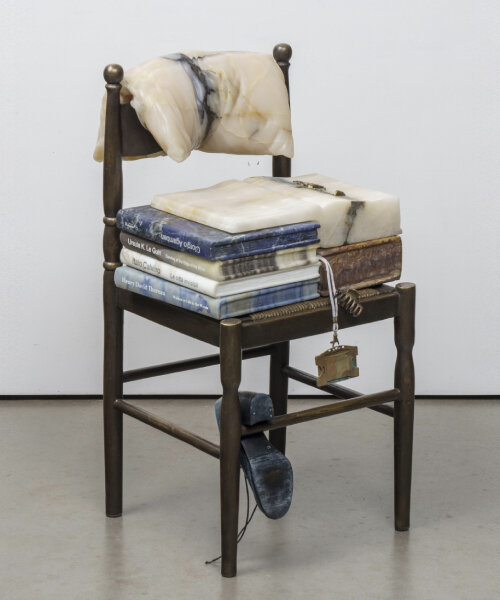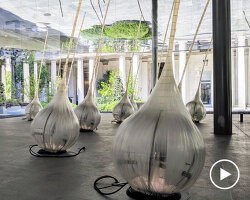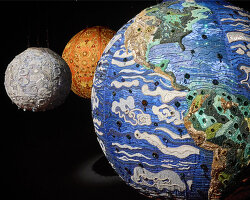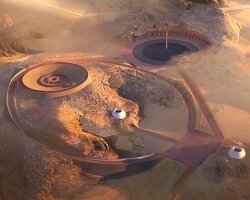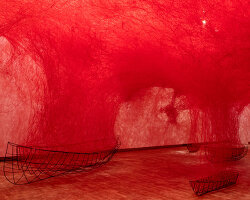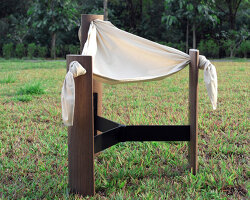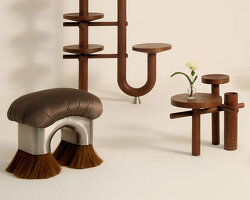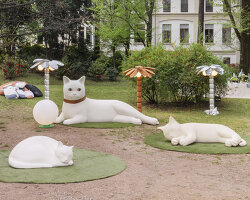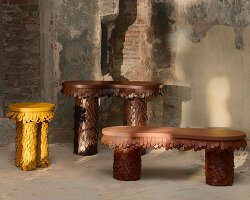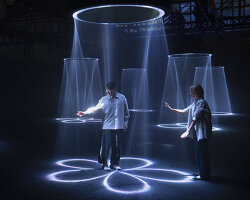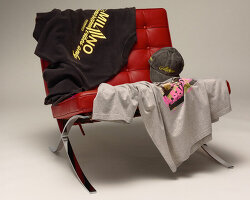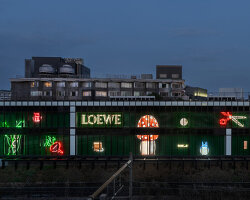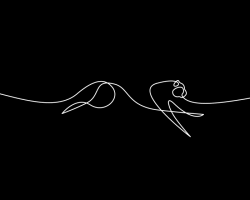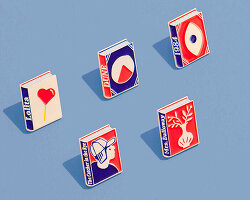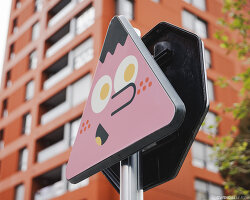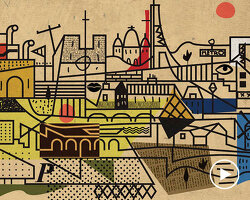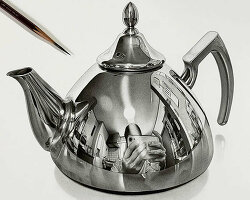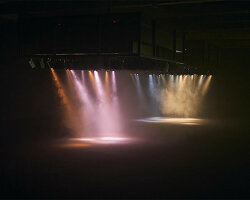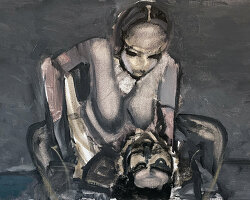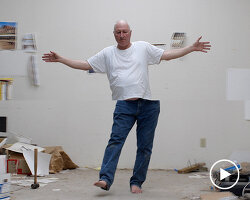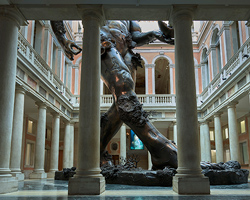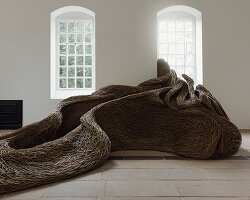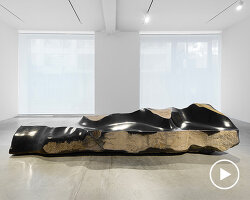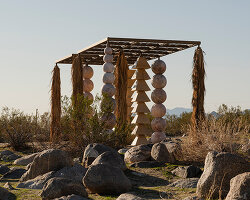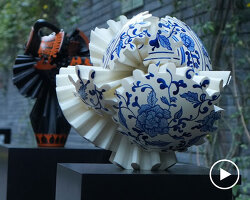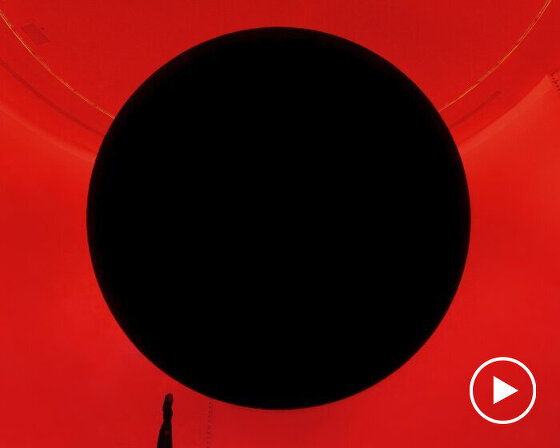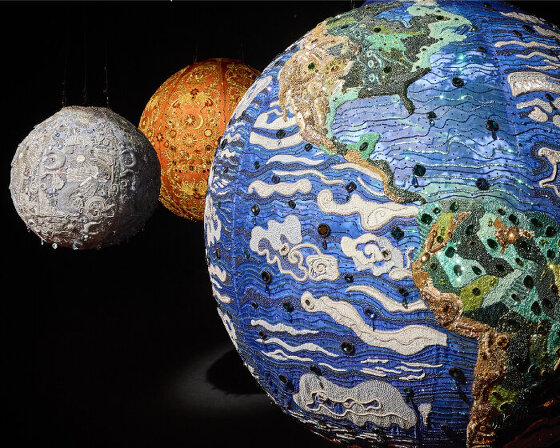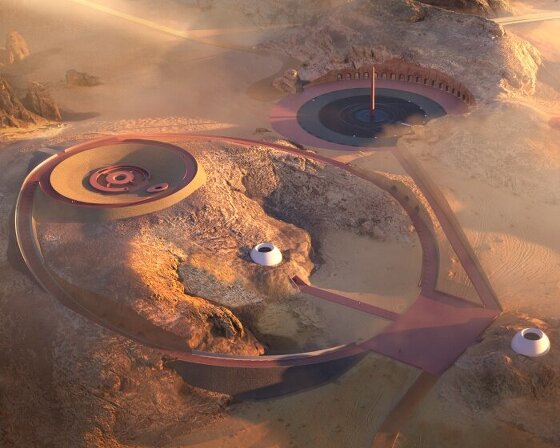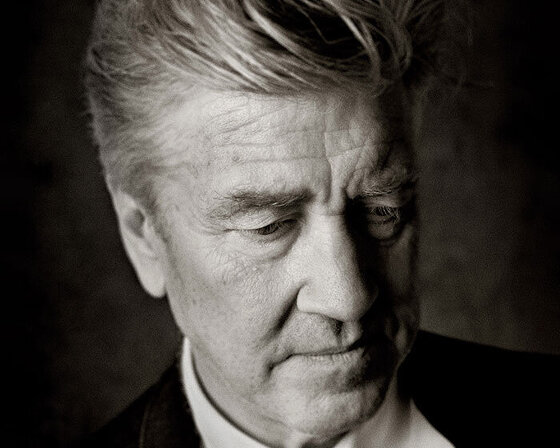‘The Strange Life of Things’ by Tatiana Trouvé at Palazzo Grassi
Tatiana Trouvé weaves constellations, maps, dreams, and more into chair sculptures, installations, and drawings for her major solo exhibition ‘The Strange Life of Things’ at Palazzo Grassi in Venice. On view between April 6th, 2025 and January 6th, 2026, the Pinault Collection hosts the show, curated by Caroline Bourgeois, senior curator of Pinault Collection, and James Lingwood, independent curator and former co-director of Artangel. designboom visits the exhibition a day before it opens to the public, interviewing James Lingwood about the show’s curation.
‘I think these are the themes that come from her work. She’s very interested in the idea of the journey, and what she conjures up through her sculptures and drawings are sort of imaginative worlds. But they also relate closely to the world we live in; maybe even have lived or will be living in the future. What we began to map out in the exhibition was a kind of journey through space and time, manifested through sculptures, installations, drawings, and so on. I like the way that her work pulls you back and forth between past, present, and future. Between the studio and the street, from the forest or the quarry to the cosmos,’ the co-curator tells designboom.
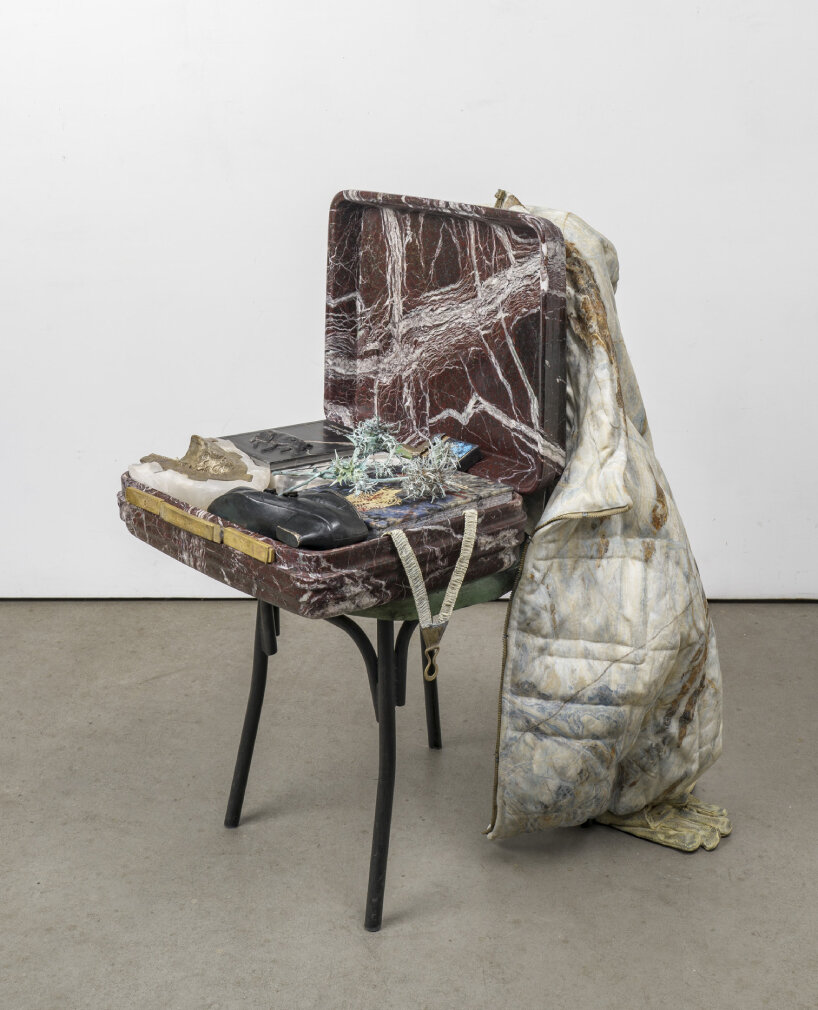
The Guardian, 2022 | all images courtesy of Tatiana Trouvé and Gagosian © Tatiana Trouvé by SIAE 2024, unless stated otherwise; photo by Florian Kleinefenn
Themes of navigation and constellations among the sculptures
Navigation, constellations, and dreams are recurring themes in the French-Italian visual artist’s works. They compose the 30 rooms that make up Palazzo Grassi’s exhibition space. Past the entrance, the marble floor becomes an asphalt ground, topped with manhole covers and metal plates cast in bronze, silver, and gold. It feels like walking around the city. When seen from above, Hors-sol (2025) evokes the view of the constellations, one that the viewers look at from the high-up. Then on the first floor, viewers walk through Navigation Gate (2024), which is a series of bronze-cast roots and branches forming two massive gates and walkways.
James Lingwood, who leads the tour before the opening, says that the artist creates the piece as a reimagination of the small stick charts used by the sailors to navigate their ways around the Marshall Islands. This wayfinding technique, along with the metal covers depicting constellations, continues throughout the other sculptures of the artist. Take L’appuntamento (2025). It’s a maze filled with domestic objects: glass panels with white paste marking, twisted metal bed frames and their springs, hardened cardboard boxes holding the panels together; rods that stick out, bent yet still sharp. At the end of the room, there’s a small glass door that peeks into the other room, like one of the secret doors found in homes.
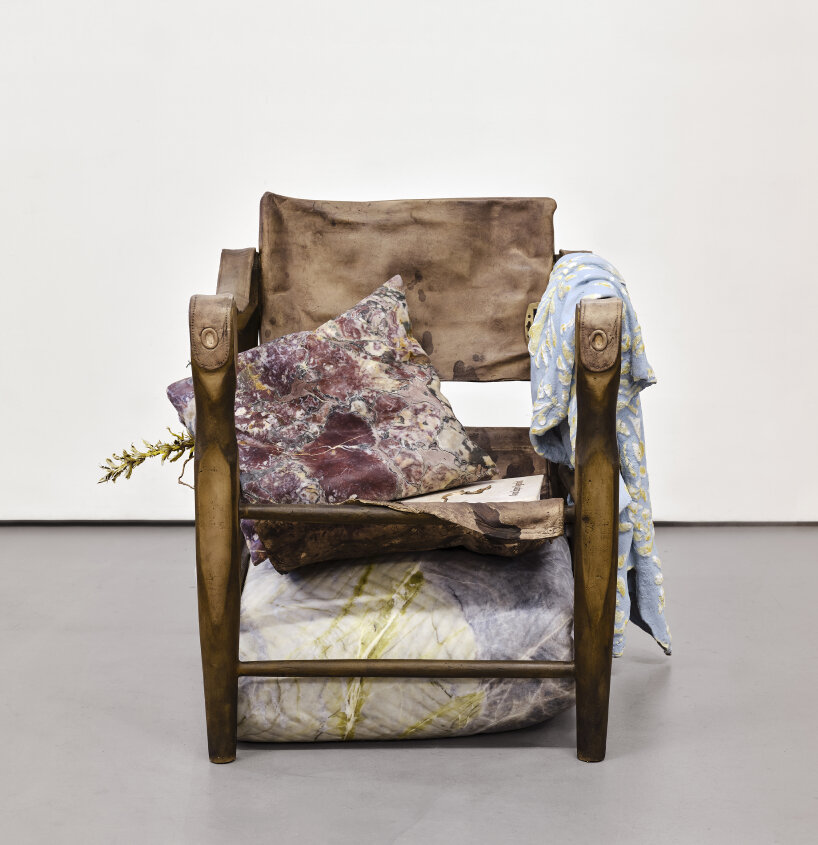
The Guardian, 2024 | photo by Thomas Lannes
Tatiana Trouvé’s experiences as sculptures at Palazzo Grassi
Tatiana Trouvé translates her personal experiences into sculptures. During the roundtable interview, designboom asks the artist how she processes her thoughts in times of disorientation and doubt, which she admits to experiencing and confronting. She says it’s easier to unpack what she feels into physical artworks rather than words or describing them. It’s the same with her experiences. In June 2023, the French police shot the 17-year-old and North-African-descent Nahel Merzouk in Montreuil, the commune where Tatiana Trouvé works, in the east of Paris.
During this period, the artist gathered materials from the days and nights of the unrest that followed: burned garbage bins, melted plastics, scorched shopfronts. Two years later, she brings these enlarged items to Palazzo Grassi in Venice as Sitting Sculpture (2024) and a large wall. The former suspends these objects used in the unrest over a bench, a form of reminiscing about the incident. The latter translates into an abstracted and massive panel, colored mostly in white and embedded with jutting, gritty details. For the artist, it elaborates and registers the rage people felt and expressed, the one she saw up close and lived through.
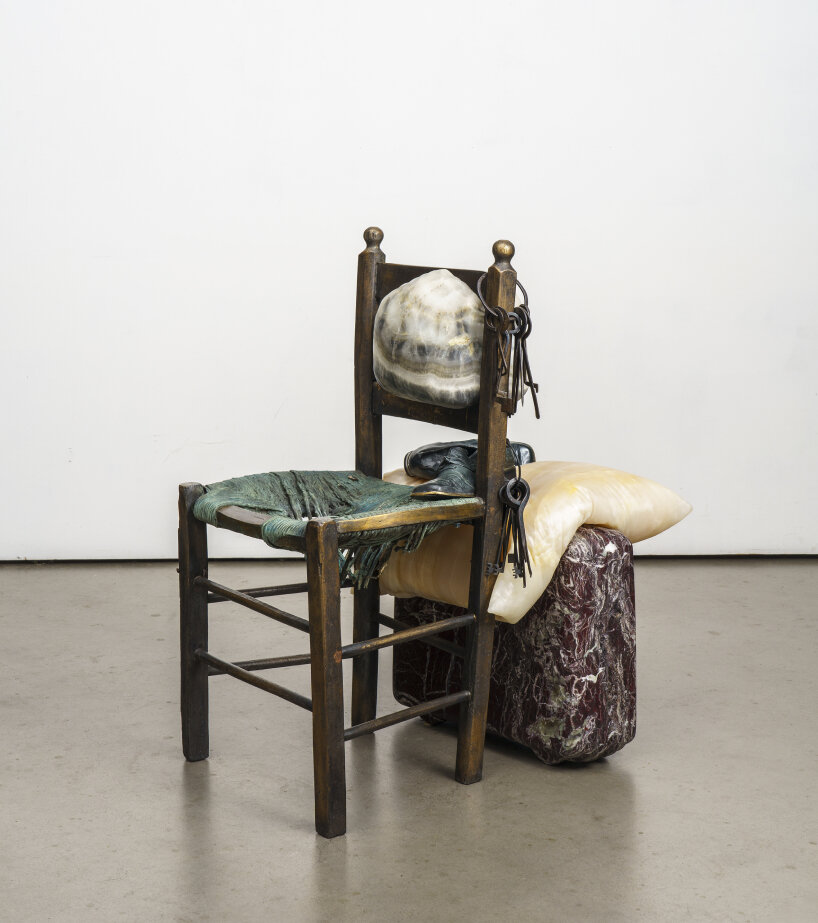
The Guardian, 2020 | photo by Florian Kleinefenn
In many of the rooms, viewers find sculptures of chairs, a series named The Guardians, with domestic items forged in bronze and brass hanging, sitting, wrapped around the seats: clothes, shoes, blankets, cushions, bags, mementos. The chairs themselves allude to when the artist used to work as a guard in the south of Italy, where she would sit for hours, waiting, monitoring. She feels invisible, yet what’s visible to her is the inner life of the guards, how their solitariness can equate to them pondering. The series attempts to make a statement on this invisibility and visibility.
On top of some chairs pile enlarged books that cover a wide range of subjects: natural sciences, speculative fiction, anthropology, anarchism, indigenous people. The literature is a peek into the alternative systems and wealth of knowledge that the artist draws from, reads, studies, and takes in, many of which are authored by women. Sitting on top of these objects are cushions, at times even books, shaped from marble, onyx, and sodalite. They hint at the everyday items that the artist surrounds herself with, giving the audience slices of her personal life and the experiences she has lived through without being explicit.
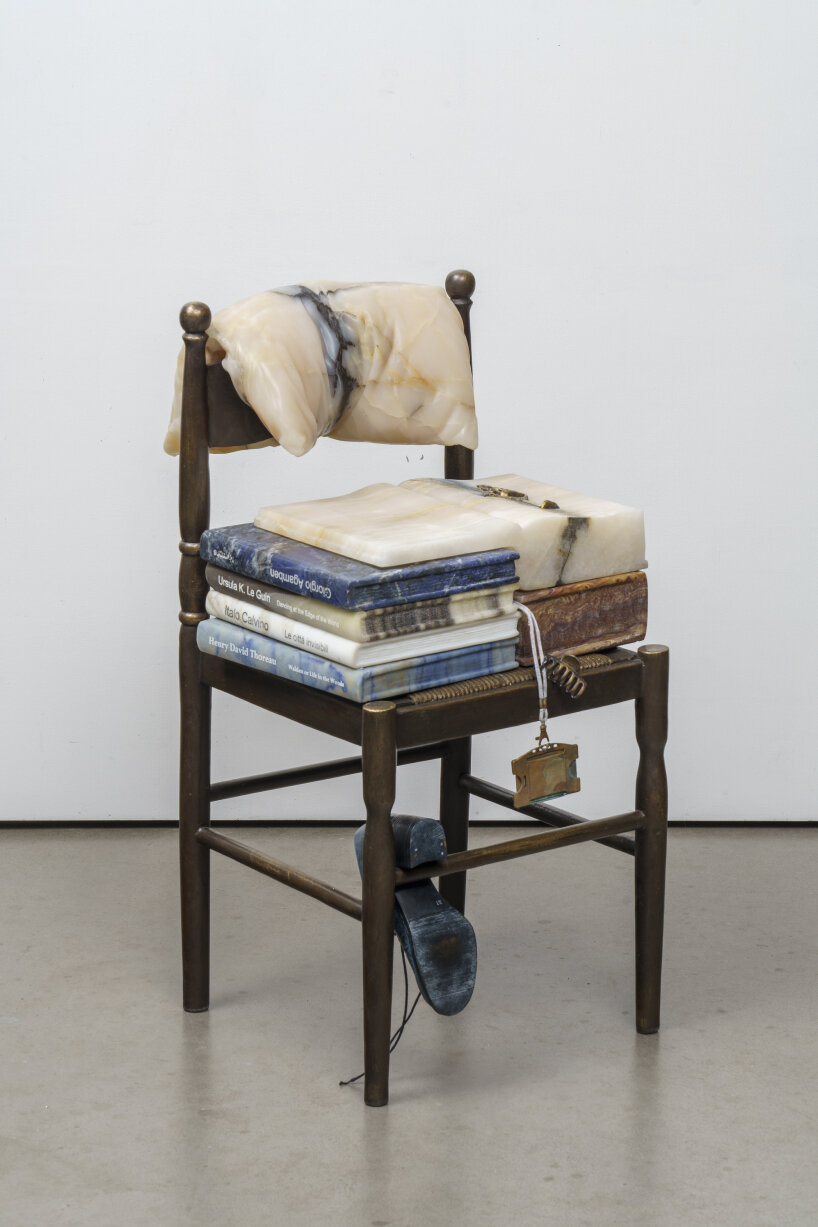
The Guardian, 2020 | photo by Florian Kleinefenn
On the second floor, the sculptures take a step back to make way for a selection of large-scale drawings from the series Les Dessouvenus as well as 70 works on paper from the artist’s studio, exhibited at Palazzo Grassi for the first time. The inner self and private world of Tatiana Trouvé slowly come through. Misty illustrations of bedrooms, gardens, and familiar places, spaces, and dreams for the artist spring onto her canvases.
Their backdrops are in lush green, blue, and natural colors, almost over empowering enough to hide the objects and scenography presented. In a way, it’s the artist’s attempt to share her personal world with the viewers at a distance, invited but not yet let in. The theme of self peaks in the last room called L’inventario (2003-2024). It recreates the studio of the artist, her workshop, and all the objects that fill it up, reproduced in bronze, silver, and gold.
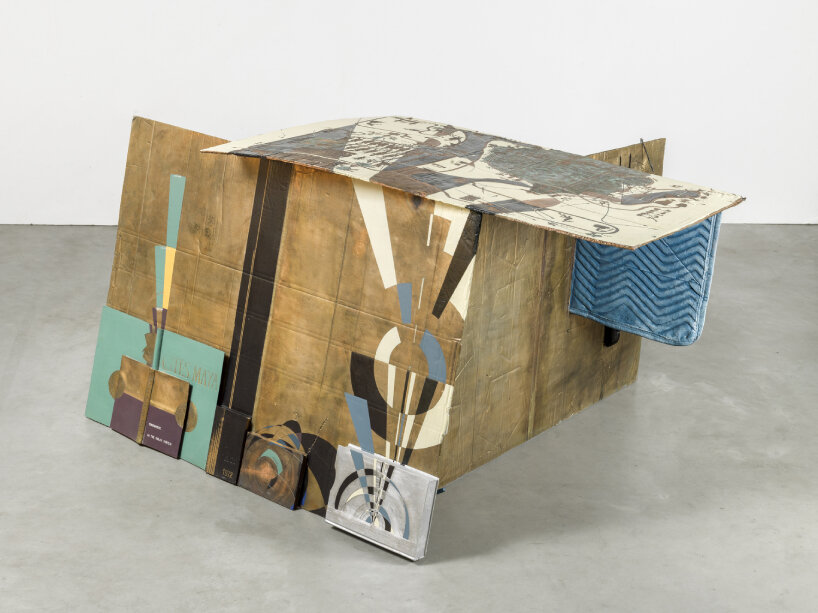
Somewhere In The Solar System, 2017 | photo by Roman März
Inside L’inventario (2003-2024), there’s an empty space in the middle for visitors to walk around, and slabs of wood hang on the three sides of the windowless room. Different items in multiple quantities come into view: locks, shoe repair, ropes, dried flowers hanging upside down, mini handbags and their replicas, stools, tablets of the bygone days, pine cones, miniature coral reefs, discarded tree branches.
The stillness in the room settles. For a moment, viewers inside Palazzo Grassi stand with the objects Tatiana Trouvé uses in her practice, those she collects and finds fascinating. They see the items she hangs around her sculptures and includes in her drawings. They look around and observe the pieces that keep her art together, the ones that translate how she feels and thinks: the dreams, constellations, disorientation, and doubt.
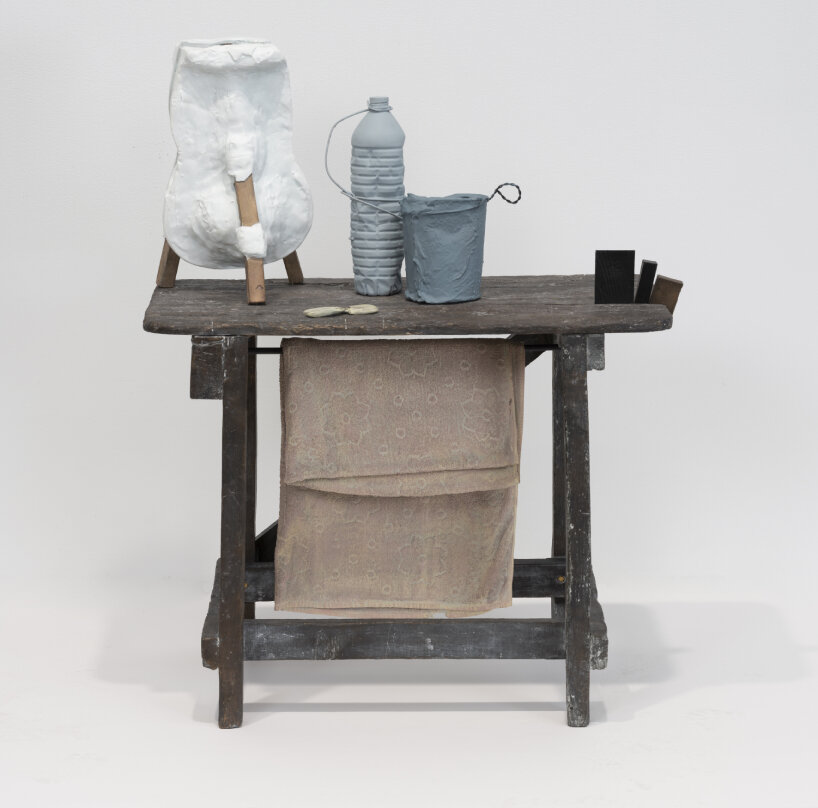
Notes on Sculpture, April 27th, “Maresa”, 2022 | photo by Robert McKeever
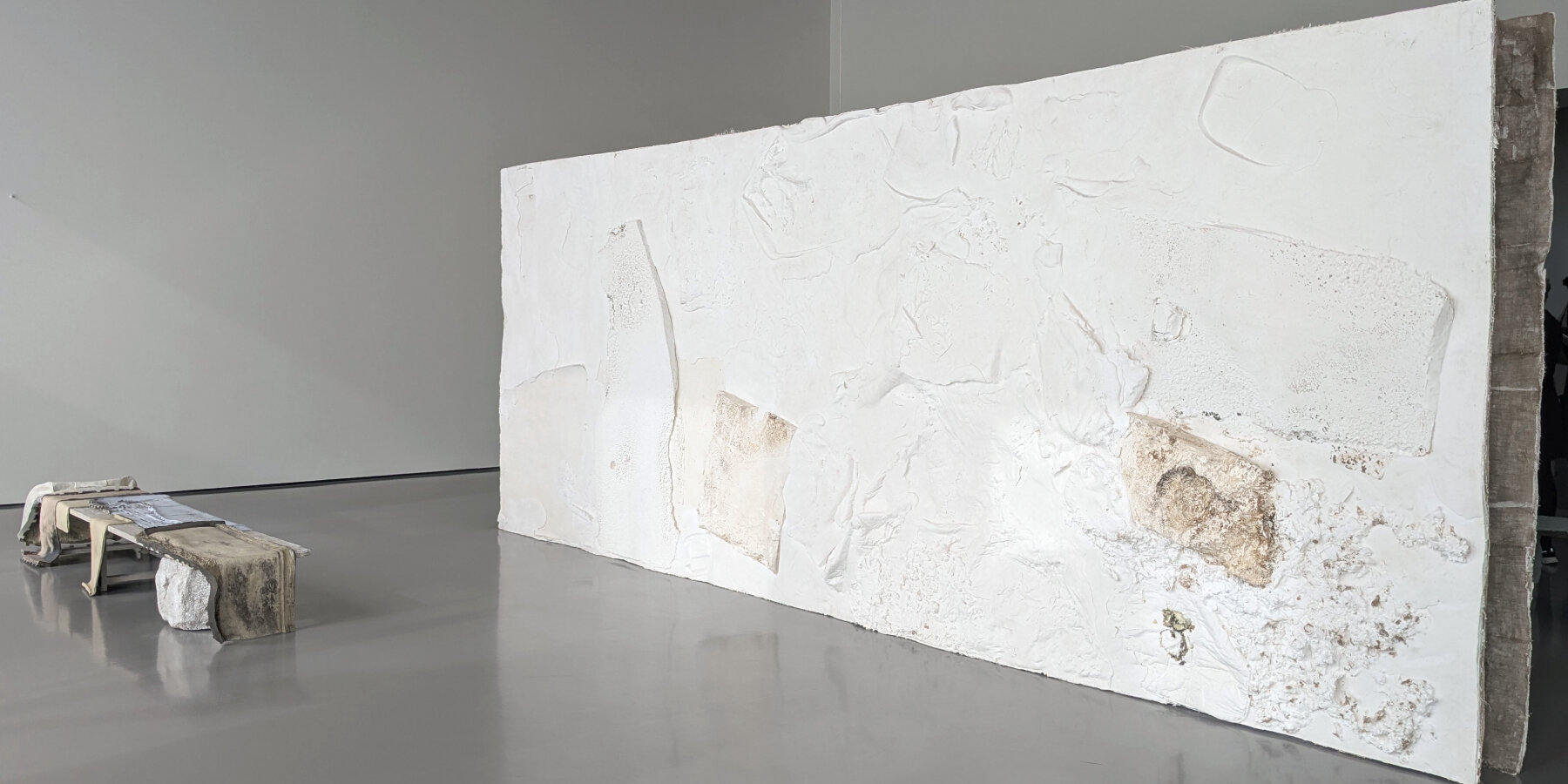
left: Sitting Sculpture (2024) | image © designboom
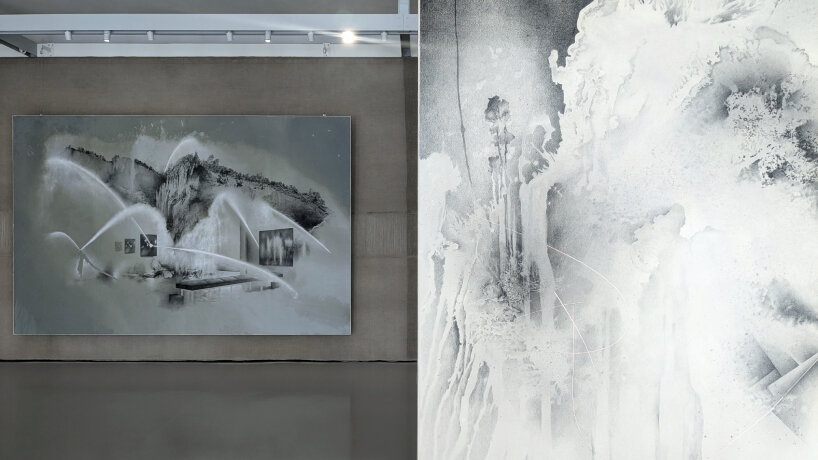
exhibition view of The Strange Life of Things | image © designboom
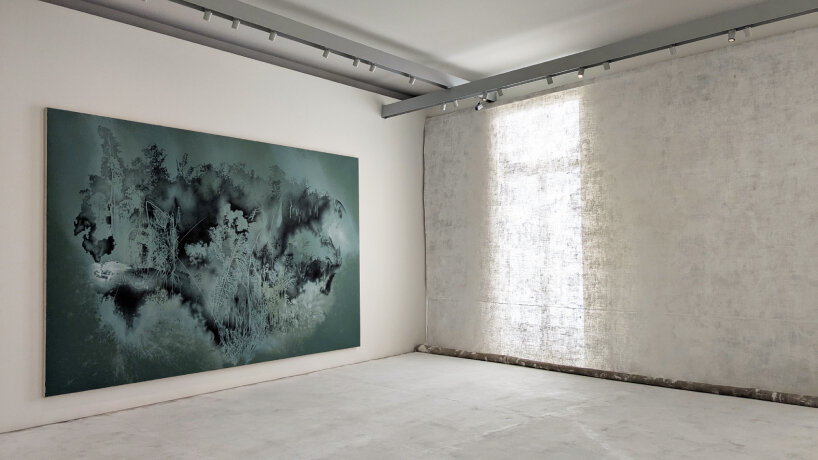
left: Tatiana Trouvé, Untitled, 2022, from the series Les dessouvenus, 2013– | image © designboom
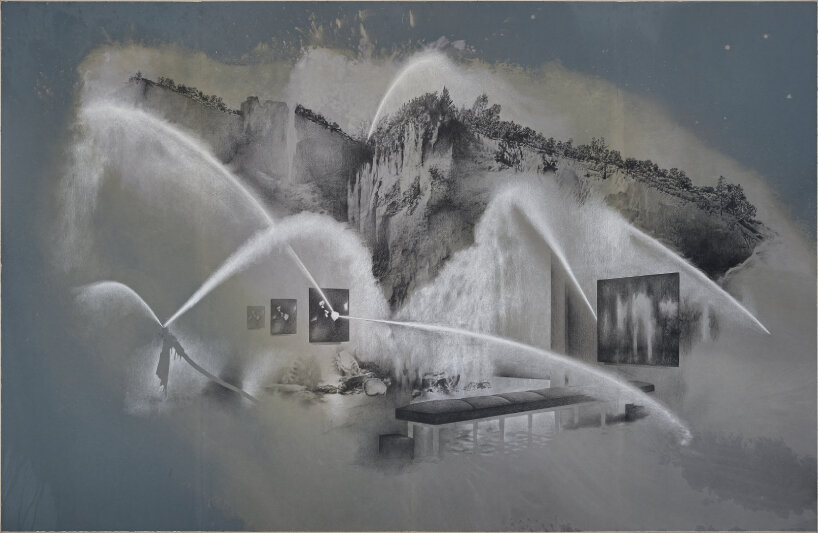
Le voyage vertical, from the series Les dessouvenus, 2022 | photo by Thomas Lannes
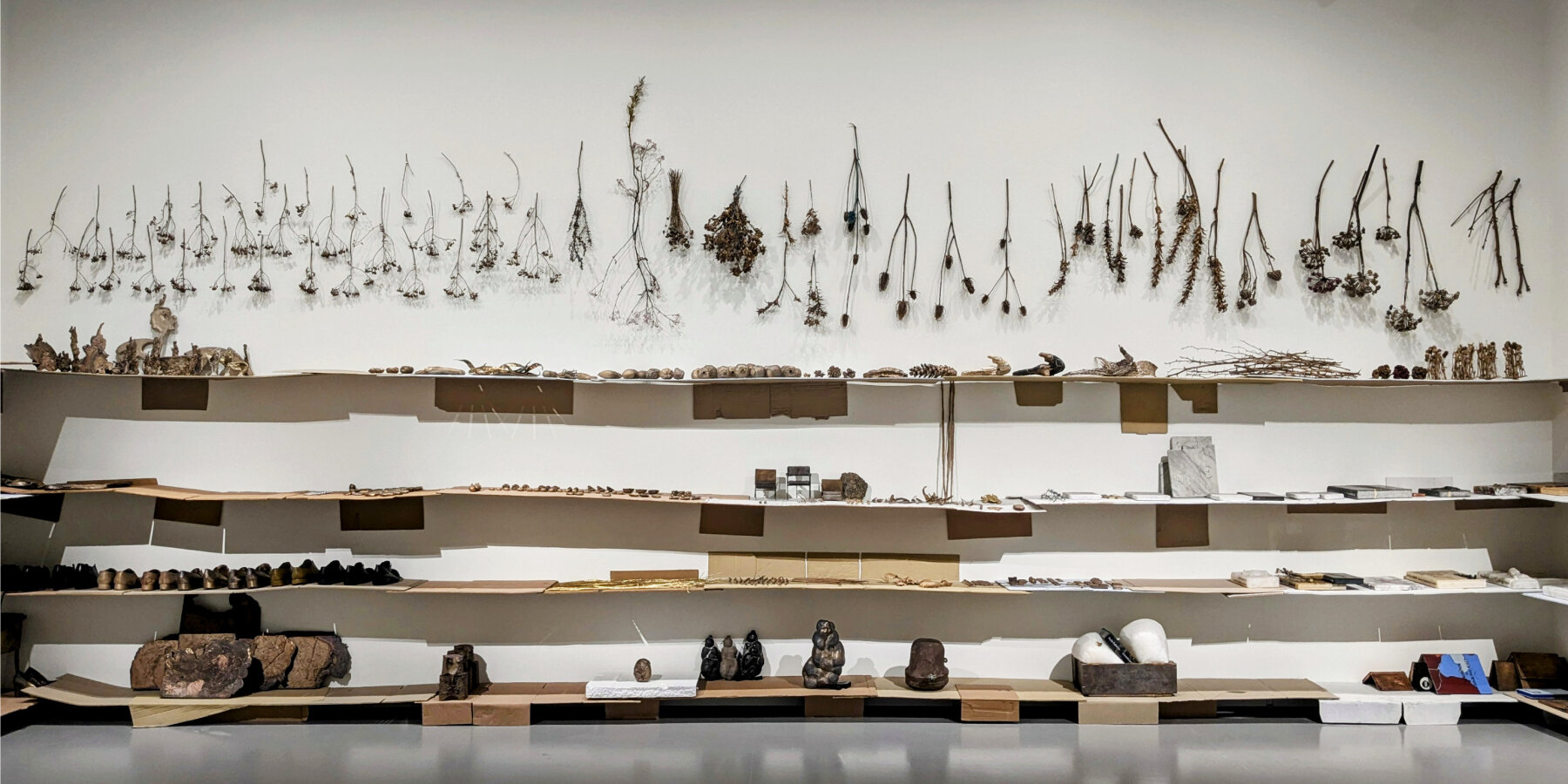
L’inventario 2003-2024 | image © designboom
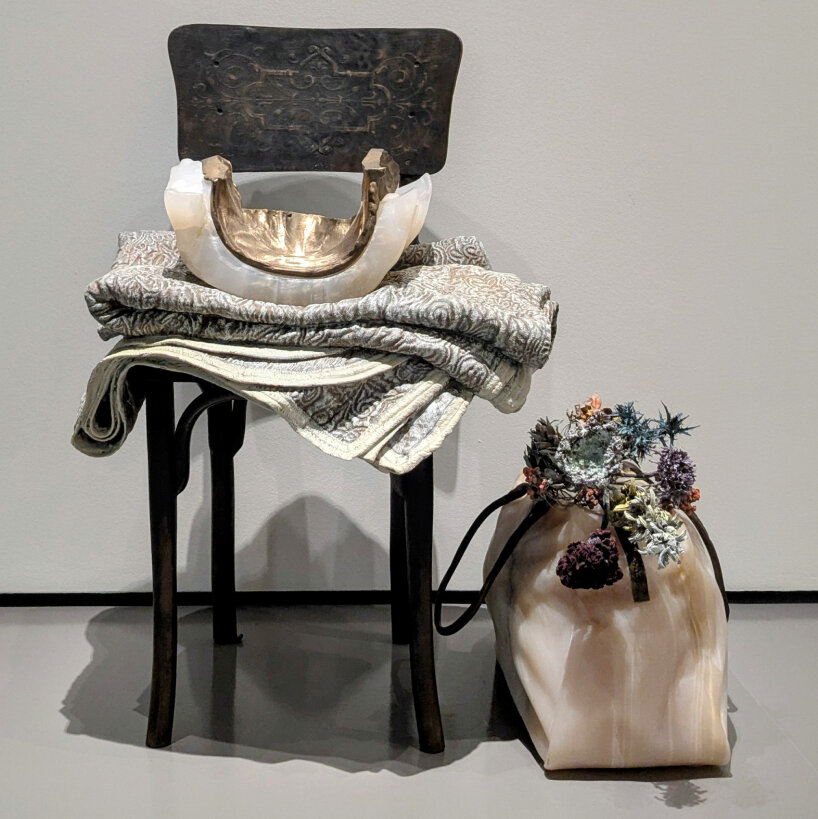
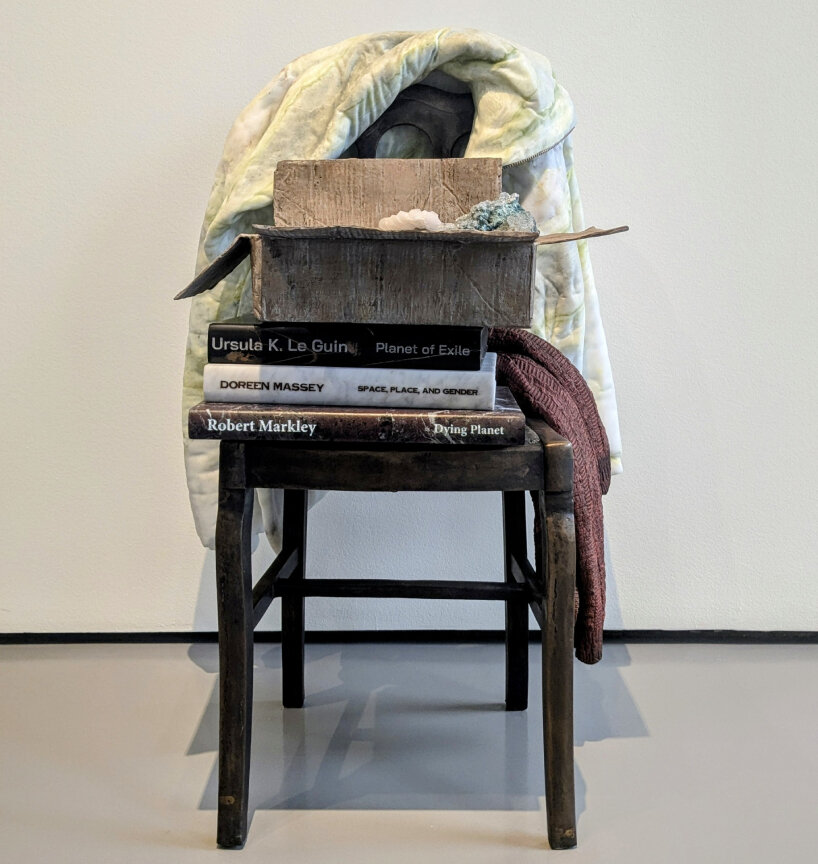
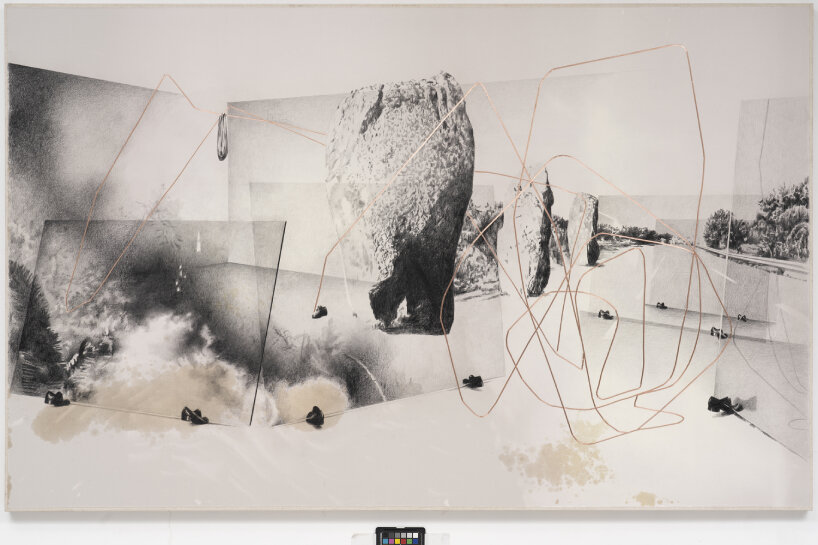

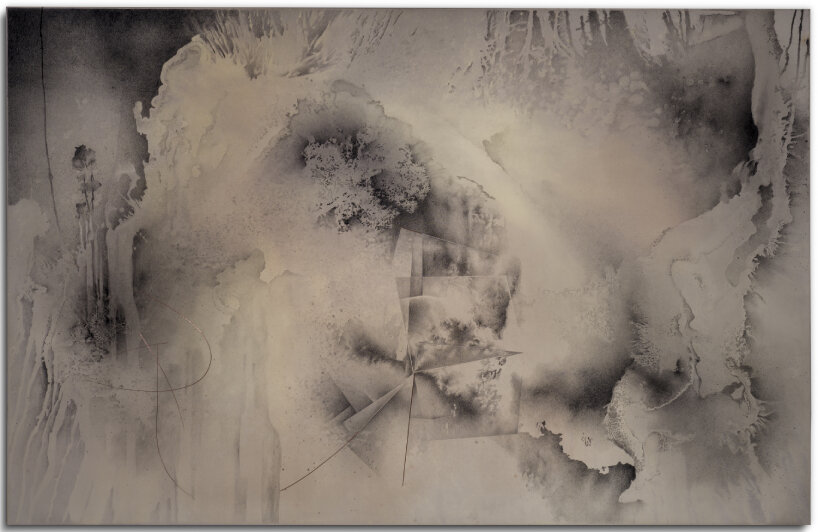
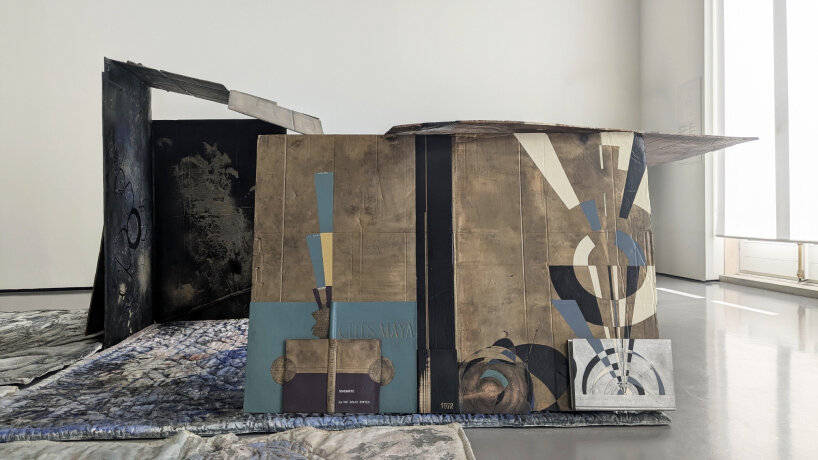
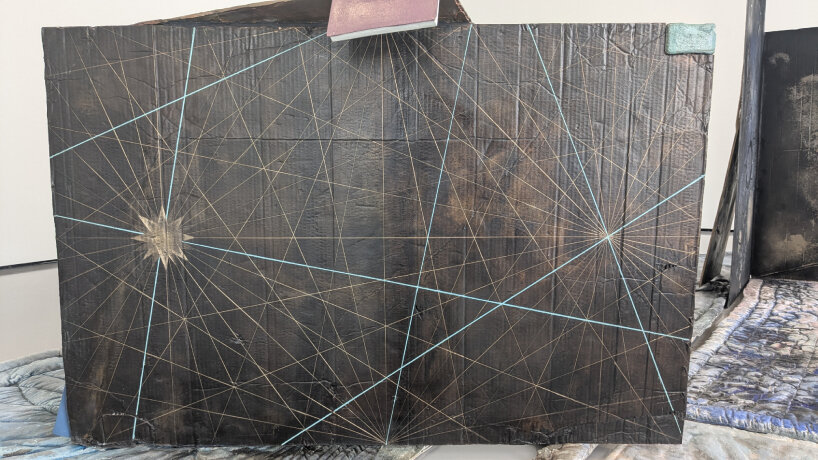
project info:
exhibition name: The Strange Life of Things
curators: Caroline Bourgeois, James Lingwood | @bourgeois0490, @james.lingwood
artist: Tatiana Trouvé | @tatianatrouve
collection: Pinault Collection | @boursedecommerce
institution: Palazzo Grassi | @palazzo_grassi
location: Campo San Samuele, Venice, Italy
photography: Florian Kleinefenn, Thomas Lannes, Roman März, Robert McKeever | @floriankleinefenn, @lannes.thomas, @roman_maerz
